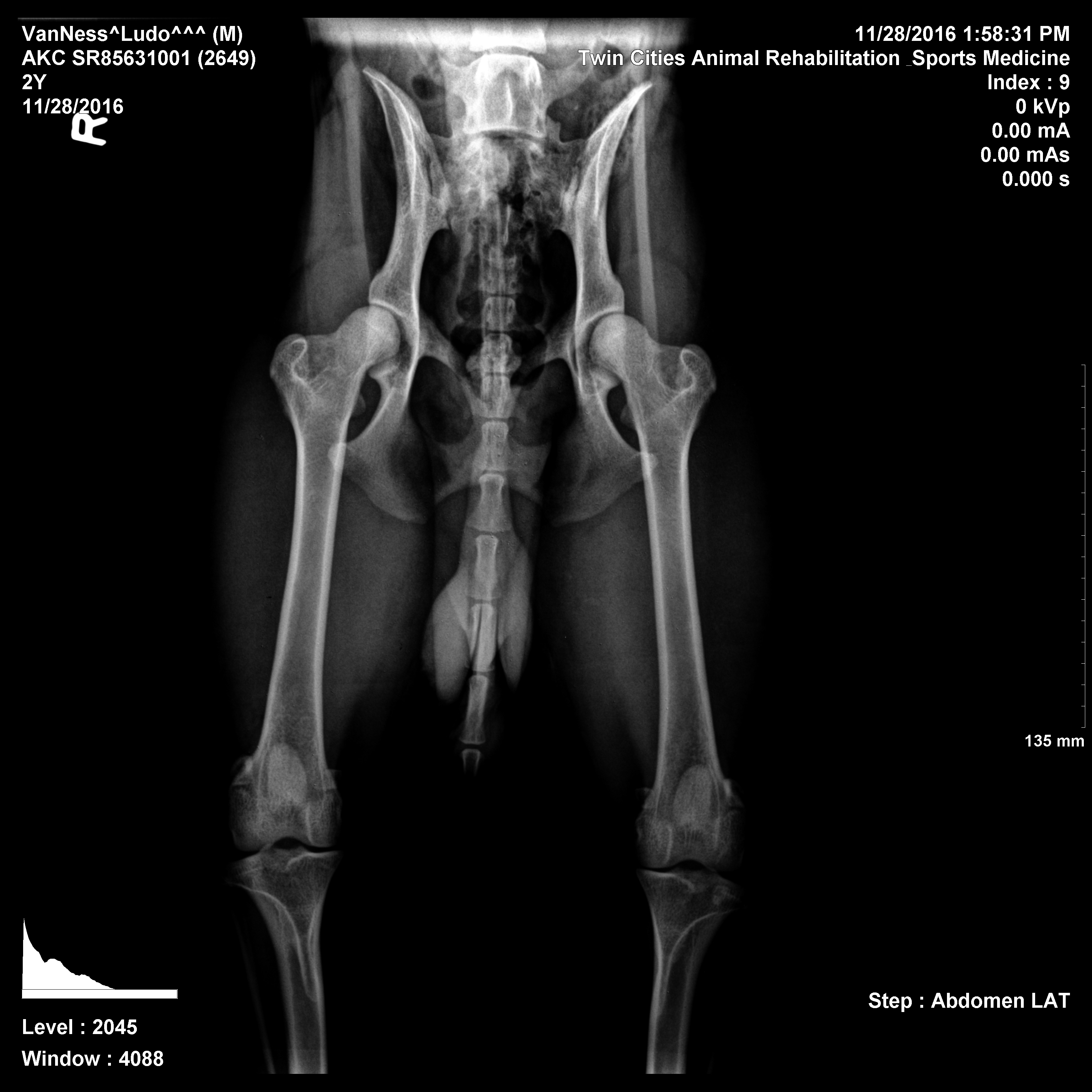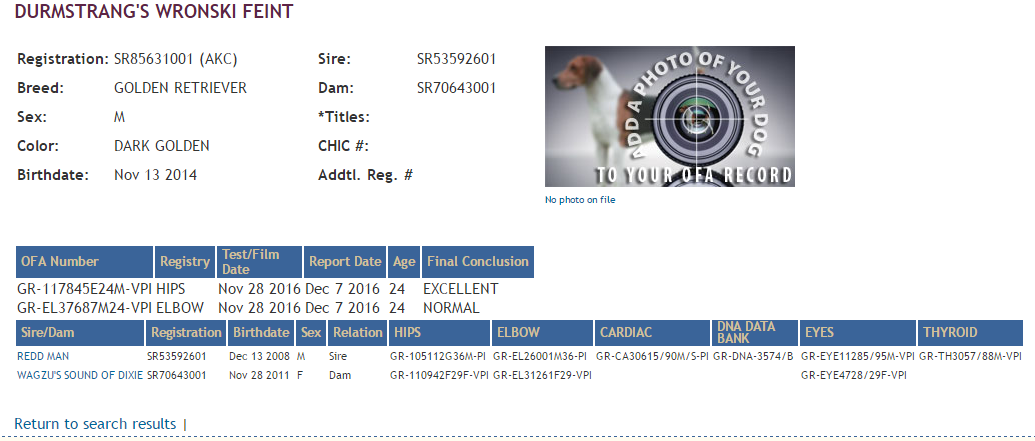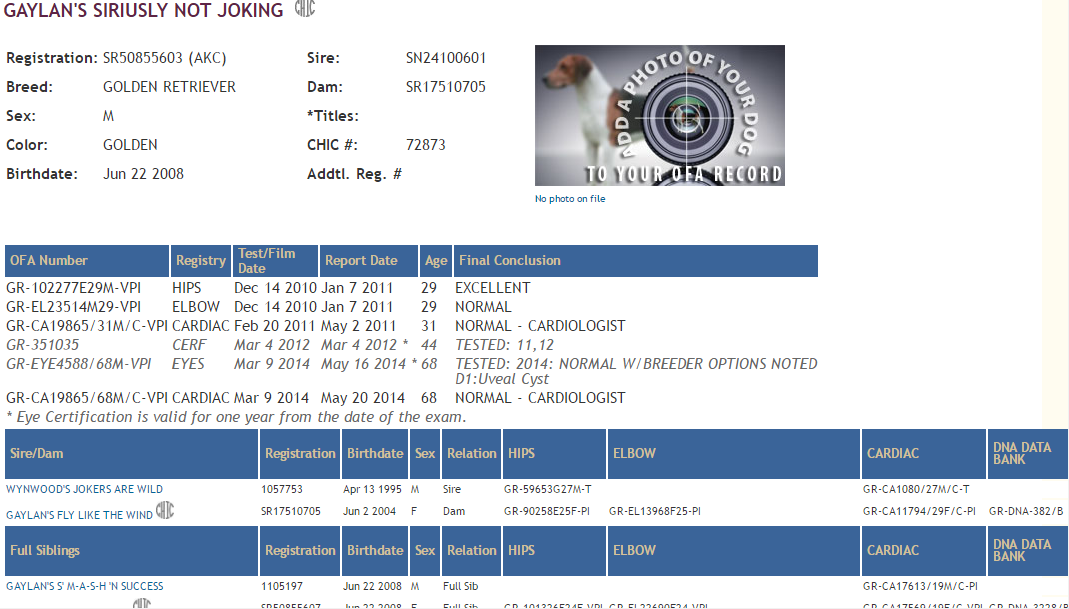In the past few months I’ve had quite a few people ask me to help them find a purebred dog through rescue or breeders. There’s a lot of ways things can go well and result in a great match. And many more ways the search can go wrong to end up with health or behavior problems. Potentially 15+ years of problems.
What is the OFA
One useful tool in the search for a dog from a breeder is a website by the Orthopedic Foundation for Animals. www.offa.org is a result database for a few very specific health conditions. It was started by a golden retriever enthusiast and specifically to help decrease hip dysplasia. Each breed club has a recommendation on the health tests that should be performed. This is to help owners make good choices on selecting a breeding. I have golden retrievers, so if we go to the Golden Retriever Club of America website we can go to the breeder code of ethics page. From there, we see the recommended health tests for hips, elbows, eyes, and heart. Each breed will have different recommendations. Though these four are fairly common in medium and large breed dogs. The OFA is nice and has complied a list of the tests recommended by specific breed clubs.
Getting a Certification:
Regular veterinarians can take the xrays for hips/elbows. Then those results are physically or digitally sent to the OFA for reading. Three radiologists rate the xrays and then the results are added to the database. An owner can chose to have non-passing results unlisted. Some breeders will do this so that unfavorable results are hidden. This makes it harder for others to make choices on purchasing dogs or breeding dogs as you don’t know if less desirable results exist. It takes about two weeks to get results. The paper results copy/’certificate’ arrives to the owner before the results are published online to give the owner time to correct spelling, etc.
Some people are very particular about where they take dogs to get xrays as poor positioning can impact results. Griffin had his done by a general practice vet in a somewhat rural area. They assured me they had done quite a few so we went with it. He was rated as excellent hips and normal elbows. This wasn’t a surprise as that was in his family history.
Viktor had his xrays done in November when we went to the rehab vet. This was mostly a matter of convenience and knowing they would do an awesome job handling him. I knew they would care about his comfort and find the right meds to make him sleepy/compliant. He did really well with that part of things. I expected him to have hip dysplasia due to his motion and structure. I expected him to have elbow problems because of his front leg problems. Somehow, he had excellent hips (better than both of his parents) and normal elbows.

by tcrehab
What does it mean:
Well, we don’t really know. There’s some recent controversy about how important elbow xrays may be as there are conditions that may show up as elbow dysplasia when there is actually other types of injury. Hip dysplasia has both genetic and environmental factors (plus, keeping dogs at a good weight!).
How to use OFA:
On the OFA website you can use the search bar to search for a dog’s registered name or registration number. This will show you results and the age when the results were obtained. Things like hips and elbows are done once but other tests like eyes, heart,and thyroid are done more often as many of those problems develop as dogs age.
You can see siblings, half siblings, and parents listed. By clicking on these relatives you can then see parents and half siblings of that dog. Looking at this piece of family history can help you make educated decisions.
If a dog is not listed – the dog may have great hips and elbows free of abnormalities. It is suspicious that the breeder is not following social norms for breeding and not being transparent about these types of tests/results. That said – things do change over time.
Griffin’s sire did not have eye clearances. That dog, Joker, was born in 1995 and eye checks were not as common then. Tonks’ sire was born around the same time and had several eye clearances. It was only a few years after Joker died in 2008 that eye clearances for senior golden retrievers became strongly encouraged due to more information available about hereditary eye conditions that typically do not appear in the typical breeding years. The lack of eye results does leave a question mark in terms of knowing if he had a specific condition, but the lack of the test is not suspicious in this situation.
Look at my dogs!
Viktor was part of a small litter. He’s the only one to have had those tests so far. I could click on either of his parents to see a more detailed health profile for either of them.

Griffin has so many siblings and half siblings it took 2 snips to show it all. The purple CHIC stands for Canine Health Information Center and means that the dog has the recommended health tests by the parent breed club. Griffin’s CHIC is light purple as his eye exam (needs to be done yearly) is out of date – you can see his last submitted one was March 2014. He has had an eye exam since then (November 2016) but I have not yet sent in the paperwork.


Tonks isn’t listed yet as we haven’t submitted anything yet, but her page would be even longer as she has many, many half siblings through her sire.